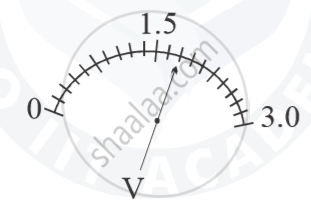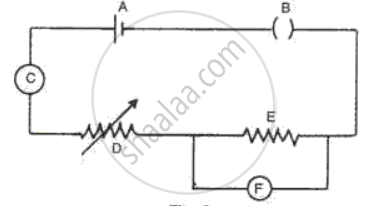Advertisements
Advertisements
प्रश्न
What is an Ohmic resistor?
उत्तर
Ohmic resistors: The resistors which obey Ohm's law are called ohmic resistors or linear resistances.
Eg: all metallic conductors like silver, aluminium, etc. For such resistors, a graph plotted for the potential difference V against current I is a straight line and the value of resistance R is the same irrespective of the value of V or I.
i.e. V ∝ I
V = IR at constant temperature.
संबंधित प्रश्न
Keeping the p.d. constant, the resistance of a circuit is halved. The current will become:
(a) one-fourth
(b) four time
(c) half
(d) double
The graph between V and I for a conductor is a straight line passing through the origin.
What should remain constant in a statement of this law?
- Draw a V-I graph for a conductor obeying Ohm’s law.
- What does the slope of V–I graph for a conductor represent?
Calculate the electric field in a copper wire of cross-sectional area 2.0 mm2 carrying a current of 1 A.
The resistivity of copper = 1.7 × 10–8 Ω m
A wire has a length of 2.0 m and a resistance of 5.0 Ω. Find the electric field existing inside the wire if it carries a current of 10 A.
Consider the sacle of voltmeter shown in the diagram and answer the following questions :

(a) What is the least count of the voltmeter?
(b) What is the reading shown by the voltmeter ?
(c) If the voltmeter is connected across a resistor of 20 `Omega` how much current is flowing through the resistor?
Fig. represents the circuit used for the verification of Ohm's law. Label the parts from A to F. state the function of each.

State and define Ohm’s law.
An electronics hobbyist is building a radio which requires 150 Ω in her circuit, but she has only 220 Ω, 79 Ω, and 92 Ω resistors available. How can she connect the available resistors to get the desired value of resistance?
How is electric current related to the potential difference across the terminals of a conductor?
Draw a labelled circuit diagram to verify this relationship.
